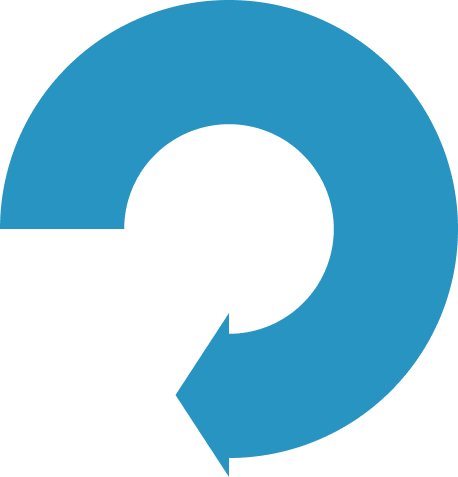


In an era defined by innovation and entrepreneurial fervor, securing funding for startups and emerging companies have become increasingly reliant on the effectiveness of pitch decks. This industry research report delves into the intriguing world of venture capitalists and their evaluation process for pitch decks.
By conducting interviews with a wide array of CEOs and investors, we gained valuable insights into the mindset of modern investors when assessing pitch decks for funding opportunities. The findings highlight the evolving expectations, key elements, and strategies that captivate venture capitalists.
We explore the critical factors that drive investment decisions in today's competitive landscape. By venturing into the future, this research report offers actionable recommendations to entrepreneurs, helping them craft pitch decks that stand out in the eyes of modern investors.

We tried to churn out the key findings regarding how modern investors analyze pitch decks and opt for funding. These findings equip entrepreneurs with valuable knowledge to optimize their pitch decks and enhance their chances of securing funding in an increasingly competitive landscape.

VCs invested only 2 minutes and 42 seconds to a pitch deck in 2022!
2The four most important slides in a pitch deck for investors are Traction, Fundraise/Ask, Market competition, and Financial flowline.
.png)
.png)
The ideal length of a pitch deck oscillates between 10 to 13 slides, enabling entrepreneurs to provide a comprehensive overview while keeping investors engaged.
4The executive summary is the most important part of a pitch deck and the ideal length of it is two slides.
If you can’t grab investors’ attention in the first 30 seconds then you risk losing them for the entire pitch.
.png)
Investors are super busy people. And, the time they invest in pitch decks that they receive on a daily basis is getting thinner.


In 2022, investors gave only give 2 minutes and 42 seconds to a pitch deck that wins funding. In 2021 it was around 3 minutes and 32 seconds.

If you can’t grab investors’ attention in the first 30 seconds then you risk losing them for the entire pitch.

The average time investors spend on each slide is 21 seconds.

Investors spend an average of 50 seconds on each slide in the executive summary section of a pitch deck.

A precisely calibrated pitch deck length can make all the difference, striking the delicate balance between brevity and substance. Too short, and crucial details may be overlooked; too long, and the momentum can falter.

The ideal length of a pitch deck is 12 to 14 slides, with a maximum of 20 slides.
.png)
Most CEOs follow the 10/20/30 rule, which suggests that a pitch deck should have 10 slides, the ideal length of the presentation shouldn't be longer than 20 minutes, and the font size used in the slides should be at least 30 points or bigger.
Only 45% of investors go through the entire pitch deck if it’s too long, ranging from 30 to 45 slides.
If a pitch deck consists of 20 to 25 pages/slides then 70% of the potential investors will view it completely.
55% of the investors in the Astel investor network reach the last page/slide of the pitch deck they receive.
A precisely calibrated pitch deck length can make all the difference, striking the delicate balance between brevity and substance. Too short, and crucial details may be overlooked; too long, and the momentum can falter.

.png) Investors
Investors Investors want to know how your company is growing and how you are acquiring customers.
.png) Financial Model
Financial Model Investors want to see your financial projections and how you plan to use the funding.
.png) Market Size
Market Size Investors want to know the size of the market you are targeting.
.png) Fundraise/Ask
Fundraise/Ask Investors want to understand the amount of funding you are seeking and the validity of that amount.
.png) Team
Team Investors want to know who is behind the company.
.png) Vision
Vision It gives your investors a window into what your company's future would look like.
.png) Competition
Competition Investors want to know who your competitors are and how you differentiate yourself from them.
.png) Revenue Model
Revenue Model Investors want to understand your revenue model or business model in a clear and concise manner.
The executive summary is a vital component of a pitch deck that captures the attention of investors, provides a quick overview of the business, helps investors make informed decisions, and saves time for both the investor and the entrepreneurs.

.png)
The ideal executive summary section needs to have 2 pages/slides.
.png)
Investors spend only 45 seconds on reviewing a one-page executive summary if that is not well designed and fails to convey the key points.
.png)
A long executive summary that contains 3 to 5 pages risks losing 60% of the investors to complete the entire section.
.png)
The executive summary should contain only 3 to 4 key points for a higher chance of fostering a lasting first impression.
.png)
Investors spend around 1 minute 40 seconds reviewing a 2-page long executive summary.
.png)
Investors read the executive summary section of 80% of the pitch decks they receive.
.png)
A well-designed and aesthetically pleasing executive summary grabs the attention of busy investors.
.png)
Most investors spend more time viewing the executive summary of a pitch deck than viewing the top 3 slides of that deck combined.
Astel Ventures team has been on over 1000 investor meetings and has seen that the global investment ecosystem is evolving with each passing year. New trends in the pitch deck content and design are coming up to meet these new trends in the investment world and the steep competition.

.png)
.png)
.png)
.png)
.png)
.png)
.png)
.png)
According to Astel Ventures, due to enhanced quality of data exchange, investors are taking a global view towards investing and startups should aim to have a geographically diverse cap table, especially if they intend to scale globally. Investors within the same region tend to have similar networks so having a base of international investors on the cap table helps increase the network startups can get access to when raising capital and forming partnerships
From the above table compiled by Astel Ventures we see that out of 80 startups and over 1000 investor calls sampled, 70+% of the interest were from investors outside the region of the start-ups.
This base is often overlooked and explored towards the later stages of fundraising. This is often too late because by this time the runway is less and pressure to raise is higher, while at the same time, reaching out to an international base of investors takes more time, network, and knowledge, when compared to those within the startup’s own region.
This is particularly true for certain sectors like Blockchain while not as much so for traditional industries which require strong local knowledge such as Logistics.
| number of local investor call | 295 |
| % of international investor calls for ai | 727 |
| % of local investor calls | 28.86% |
| % of International investor calls | 71.14% |
| #of startups in sample | 80 |
| % of international investor calls for fintech | 70.74% |
| % of international investor calls for ai | 66.20% |
| % of international investor calls for blockchain | 87.10% |
| % of international investor calls for b2b software | 70.89% |
| % of international investor calls for logistics | 39.77% |
According to Astel Ventures if you can’t grab investors’ attention on your deck in the first 30 seconds then you risk losing them for the entire pitch. Given investors spend an average 200 seconds on a deck, and an ideal length should be under 15 slides, this means that entrepreneurs have to find the hook/best way to highlight their company within the first 2-3 slides.
Astel Venture’s data suggests that the Tech, Team, Traction, and Financial slides are the most important to investors and capture the majority of their time spent on the deck. It is equally important to ensure that slides should be designed in a way to be easily digested within 20 seconds. While a pitch deck should have no more than 30 takeaways, entrepreneurs should always think about what are the 3 main things they want the investors to remember about their firm whether it's on the deck or during their live pitch with the investors. This will ensure that the investors can pitch the startups in the best way during their internal committee meetings.
According to Astel Ventures, the success rate for setting up investor intro meetings increases significantly when talking to investors about the startups during informal catch-ups, as compared to when sending emails to a list of warm introductions. Most investors have a large backlog of startups to evaluate and it is very hard to stand apart from the crowd by sending cold emails without having a pre-existing network or a well renowned VC on the cap table.
The importance of reaching out to investors who are a part of your network cannot be overstated. Each catchup conversation with an investor is 10 times more likely to turn into an investor intro call for startups compared to sending it to a warm investor contact over email and 250 times more likely than sending a cold email to an investor. This is why it's important to leverage the network of the existing investors on the cap table both to set up initial conversations with interested investors and to be points of referral for investors in the later stages of the due diligence process.
| # of live pitches in the last 3 months | 104 |
| total number of calls in last 3 months | 68 |
| # calls set up from pitches | 26 |
| % of calls set up from live pitches | 38.24% |
| rough# warm emails sent | 750 |
| # of calls from warm emails | 20 |
| # of calls from cold emails | 22 |
| # of cold emails | 19450 |
| Success rate of live pitches | 25.00% |
| Success rate of warm emails | 2.67% |
| Success rate of Cold emails | 0.11% |

The report has shed light on the dynamic relationship between pitch decks and investors in the ever-evolving landscape of venture capital. Our research has revealed crucial insights that can empower entrepreneurs to craft pitch decks that captivate and secure funding in today's competitive environment.
Further, entrepreneurs must adapt to the changing investment landscape and leverage these findings to optimize their pitch decks. By capturing investors' attention quickly, presenting vital information effectively, and tailoring pitch decks to the preferences of modern investors, entrepreneurs can enhance their chances of securing funding.
Lastly, as entrepreneurs venture into the future, armed with these insights, they can navigate the competitive landscape and take significant strides toward success in the world of fundraising.